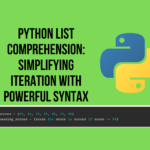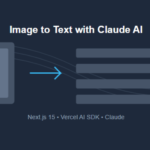Introduction to AI Prompt Engineering
In the world of AI and natural language processing, the quality of inputs greatly impacts the output. This is where “Prompt Engineering” comes into play. Prompt engineering is a way of giving instructions to AI models to generate responses, solutions, or creative outputs closely aligned with our objectives. Example: ✅ Well-Defined Prompt: “Compose a 1000-word article exploring the impact of artificial intelligence on healthcare technology. Discuss applications like medical image analysis, predictive diagnostics, and patient care enhancement.” Here the well-defined prompt outlines the desired length, topic, and key areas of focus, guiding the AI model toward generating a coherent and informative article.
Whether it’s generating text, translating languages, writing code, or engaging in creative writing, mastering the art of prompt engineering can significantly enhance the effectiveness of AI models.
Importance of Well-Crafted Prompts
AI models, while powerful, require precise and informative inputs to generate accurate and relevant outputs. Well-crafted prompts facilitate a better understanding of the desired task, enabling the model to produce the desired outcomes efficiently.
Consider the task of content generation.
Poor AI Prompt❌
You wish to produce an engaging article on “sustainable living” for an environmentally conscious audience. A poorly crafted prompt might be: “Write an article about going green.” This vague prompt could result in a scattered output, lacking the depth and specificity desired.
Well Defined AI Prompt✅
On the other hand, a well-crafted prompt such as: “Compose a 1000-word article highlighting innovative ways individuals can adopt sustainable practices in their daily lives, focusing on energy conservation, waste reduction, and eco-friendly choices” provides a clear map for the AI to follow, ensuring a cohesive and informative piece.

Well-crafted prompts transcend mere communication; they encapsulate the essence of the desired outcome. In the realm of code generation, for instance, a precise prompt ensures that the AI produces functional and optimized code. When translating languages, a well-structured prompt aids in preserving the original intent, nuances, and context of the text.
Strategies for Effective Prompt Engineering:
- Understanding Model Capabilities: Familiarize yourself with the AI model’s strengths and limitations to set realistic expectations for its outputs.
- Clarity and Specificity in Prompts: Clearly define the task you want the AI model to perform, avoiding ambiguous or vague instructions.
- Providing Context and Background: Contextualize the prompt by offering relevant information. This helps the AI model better comprehend the task.
- Utilizing Examples and Analogies: Provide examples or analogies related to the task, aiding the AI model in grasping the desired output format.
- Incorporating SEO Keywords: When generating content for the web, include SEO keywords to optimize search engine rankings and visibility.
Real-World Examples of AI Prompts:
Let’s delve into real-world examples that illuminate how expertly crafted prompts orchestrate AI models to generate remarkable outcomes:
- Content Generation: Imagine you’re a digital marketer 🧑💻 aiming to create an engaging blog post on the benefits of intermittent fasting. Your prompt could be: “Craft a 1500-word blog post highlighting the science-backed advantages of intermittent fasting for health and weight management. Include insights from recent studies, anecdotal evidence, and practical tips for beginners.”
- Code Writing: For software developers seeking a solution, prompt engineering can expedite code generation. A prompt like: “Write a Python function to sort a list of integers in ascending order using the merge sort algorithm” would guide the AI to provide an optimized coding solution.
- Language Translation: Prompt engineering extends its influence across languages. When tasked with translating a sentence from English to French, a well-constructed prompt like: “Translate the following English sentence into French while maintaining its grammatical structure and nuances: ‘The journey of a thousand miles begins with a single step'” ensures a faithful and culturally sensitive translation.
- Creative Writing: Crafting imaginative narratives is a playground for prompt engineering. Picture a prompt that spawns creativity: “Compose a short story set in a steampunk-inspired metropolis, where clockwork contraptions hold the key to solving a mysterious disappearance.”
Each of these examples underscores the pivotal role that well-structured prompts play in guiding AI models towards specific objectives. The prompts provide the context, scope, and constraints necessary for AI to generate outputs that align seamlessly with human intent.
I found this GitHub project where the author has listed prompt examples.
Fine-Tuning AI Prompts and Iteration:
After presenting a prompt to an AI model and receiving its response, the journey is far from over. It’s a moment of critical examination—comparing the output against the intended goal, assessing its accuracy, relevance, and coherence. This evaluation provides the insight needed to sculpt the prompt further, enriching it with clarifications, context, and additional constraints.

Consider the example of content generation for a travel blog. The initial output may capture the essence of the topic but lack a compelling narrative or specific examples. Armed with this insight, you can fine-tune the prompt by adding: “Weave in a personal travel experience where you observed the positive impact of sustainable tourism practices.”
As you feed the model with refined prompts, it learns to align better with your expectations. Iteration is the vehicle through which prompt engineering converges with AI’s learning curve. The more you iterate, the more the AI adapts to your unique communication style and intent, yielding outputs that resonate more closely with human-authored content.
But like any artistic pursuit, balance is key. Too many iterations might lead to overfitting—the AI crafting responses that replicate your input rather than offering innovative insights. Striking this balance requires a delicate interplay of creativity, precision, and adaptability.
In the context of fine-tuning and iteration, challenges may arise. It’s possible to encounter instances where the AI models exhibit unexpected behavior or struggle with certain nuances. For instance, translating idiomatic expressions from one language to another might pose challenges. However, each of these challenges is an opportunity for prompt engineering to evolve, providing clearer instructions, context, or even novel examples to overcome hurdles.
Ultimately, fine-tuning and iteration transform prompt engineering from a static endeavor into a dynamic art form. Through this process, you harness the innate intelligence of AI models, guiding them to refine their understanding and enhance their responses over time.
Challenges and Pitfalls in Prompt Engineering:
1. Ambiguity and Vagueness: Ambiguous or vague prompts are breeding grounds for confusion. AI models, while advanced, rely heavily on the clarity of instructions. A prompt like “Write an article about technology” leaves much room for interpretation. The AI might struggle to determine the specific focus, resulting in an output that misses the mark.
2. Bias Reinforcement: AI models, including language models, can inherit biases present in the data they’re trained on. Poorly crafted prompts may inadvertently reinforce these biases. For instance, a biased prompt could generate content that inadvertently reinforces stereotypes or prejudices, despite the user’s intentions.
3. Overfitting and Repetition: Overly specific prompts risk inducing overfitting—a phenomenon where the AI memorizes patterns in the training data rather than demonstrating genuine understanding. This could lead to repetitive or formulaic outputs, lacking creativity and broader context.
4. Handling Complex Instructions: Some tasks require multi-step or complex instructions. Crafting prompts that encapsulate intricate requirements while maintaining clarity can be challenging. An AI model might struggle to navigate through detailed instructions, resulting in fragmented or disjointed responses.
Testing AI Prompts on OpenAI:

- Access the OpenAI Playground: Visit the OpenAI Playground on the OpenAI website. This is a user-friendly interface where you can interact with various AI models, including GPT-3.
- Choose the AI Model: Select the AI model you want to test. GPT-3 is a versatile language model that can handle a wide range of tasks.
- Craft Your Prompt: In the input field, construct your prompt. Be specific, clear, and provide any necessary context. The better the prompt, the more accurate and relevant the AI’s response will be.
- Submit and Receive Output: Once you’ve entered the prompt, click the button to generate the output. The AI model will process your input and provide a response based on its understanding of the prompt.
- Evaluate the Response: Carefully examine the generated output. Does it align with your expectations? Does it provide the information or result you were aiming for?
- Fine-Tuning and Experimentation: If the output doesn’t meet your expectations, consider refining the prompt. Experiment with different wording, provide additional context, or adjust the instructions to guide the AI towards the desired outcome.
- Iterate and Improve: OpenAI’s models learn from data and user interactions. By iteratively refining your prompts and evaluating the responses, you can help the AI model better understand your intent and generate more accurate outputs over time.
Remember, prompt engineering is an iterative process. Testing, refining, and experimenting with prompts will help you achieve the desired results. By practicing and learning from the outputs, you’ll be able to effectively communicate with AI models and harness their capabilities to your advantage.
Future of Prompt Engineering:
As AI models evolve, prompt engineering will likely become more intuitive and user-friendly. AI developers are actively working on tools and techniques to simplify prompt crafting and enhance model understanding.
1. Enhanced User-Friendly Interfaces: The future of prompt engineering will likely witness the development of intuitive interfaces that enable users to construct prompts more effortlessly. These interfaces could offer suggestions, real-time feedback, and visualizations to guide users in formulating effective prompts.
2. Contextual Understanding: AI models are expected to gain better contextual comprehension, allowing them to grasp intricate prompts that involve complex instructions, idiomatic expressions, and multi-layered meanings. This advancement will lead to more accurate and nuanced outputs.
3. Ethical Prompt Design: Ethics will play an increasingly significant role in prompt engineering. Developers will focus on crafting prompts that align with ethical guidelines, ensuring that AI-generated content adheres to standards of fairness, inclusivity, and accuracy.
4. Personalized Interaction: The future holds the potential for AI models to understand individual communication styles and preferences. This personalized interaction will allow AI to generate outputs that resonate more closely with the user’s voice, creating a seamless integration between human intent and AI response.
5. Domain-Specific Expertise: Prompt engineering will become more attuned to specific domains, enabling users to extract specialized insights and content. Whether it’s medical diagnoses, legal document analysis, or architectural design, prompts will be tailored to leverage AI’s expertise in these specific fields.
6. Multimodal Prompting: The future may usher in the integration of multiple modes of input, such as text, images, and voice, to create more comprehensive and dynamic prompts. This will enhance AI’s ability to generate diverse outputs, from textual responses to visual compositions.
7. Collaborative Prompt Engineering: Collaboration between humans and AI models in prompt construction could become a reality. AI could provide real-time suggestions, enhancing the creative process and allowing users to co-create prompts that leverage the model’s capabilities.
8. Addressing Biases: Developers are likely to invest heavily in addressing biases and ensuring that prompt engineering actively counteracts any form of discrimination or misinformation present in AI-generated content.
9. Iterative Feedback Loop: Continuous feedback loops will be established, enabling users to fine-tune prompts based on AI-generated outputs. This iterative process will enhance the symbiotic relationship between human input and AI outcomes.
10. Seamless Integration into Workflows: Prompt engineering will become seamlessly integrated into various workflows and industries. Businesses will leverage AI to generate reports, summaries, and insights, while creative professionals will collaborate with AI to produce art, literature, and music.
Reference
Conclusion
Prompt engineering is the cornerstone of effective AI interactions. By carefully designing prompts that are clear, specific, and context-rich, we can harness the power of AI to meet our diverse needs across various domains, from content generation to creative writing, coding, and beyond. As AI technology advances, mastering prompt engineering will continue to be a valuable skill, driving meaningful and accurate outcomes.









